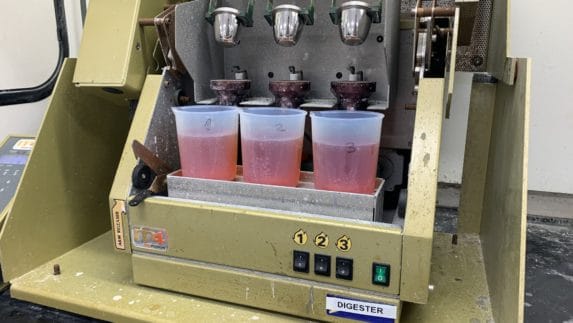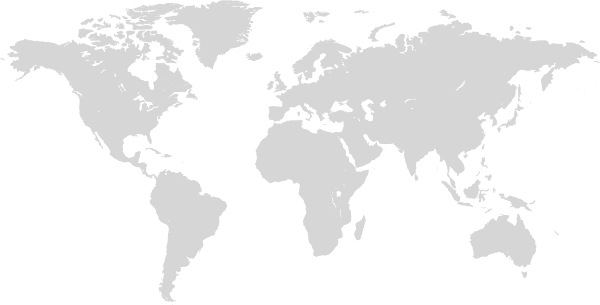In the early 1980s, the research and development labs at Amway Corp. were filled primarily with chemists specializing in cleaning, cosmetics and nutrition, not home technology.
That’s to be expected for a direct selling company that for more than 20 years saw success by offering a variety of soaps, detergents, beauty products and nutritional supplements.
But today’s labs are a different story. In addition to the experts on the mainstay categories, Amway has a world-class team of more than 100 scientists researching home technology products. They have contributed a fair share to the company’s total of more than 1,000 granted patents and 700 pending applications worldwide.
Combine that with the rest of the research teams and it’s enough to put Amway’s parent company Alticor at number 11 on The Patent Board’s Consumer Products industry scorecard in August 2013. The ranking seeks to measure the overall strength of a company’s patent portfolio by combining quality and quantity. Alticor ranked second among the industry’s top 20 companies in Research Intensity, one of the categories used to determine the final ranking.
How did that happen? It was something in the water.
In the early 1980s, people were beginning to comprehend the potential long-term health implications of environmental pollutants in drinking water. Passage of the US Safe Drinking Water Act in 1974 drew attention to the naturally occurring and man-made contaminants that may be found in drinking water, and people sought ways to gain control over the quality of their home water supply. Sales of water filtration products began to pick up. Amway executives knew they could improve on the systems already on the market and saw it as a good fit for Amway distributors who were ready to broaden their sales. They also saw potential in people’s rising interest in home air filtration.
So began the building of a top-notch home technology products team. The first members brought new disciplines like packaging engineering, electrical engineering, mechanical engineering, electronics and programming, in addition to chemistry. They sought advice from leading experts in key fields to expand their expertise.
Today, this R&D team of 100-plus talented professionals boasts 39 different disciplines in home technology product development.
Roy Kuennen, Ph.D., director of durables research and development for Amway, said the team consists of the “Lewises and Clarks,” who explore blue-sky concepts on the front end, as well as the specialists who ensure every detail is exactly as needed to produce, sustain and support industry-leading products. And they are all encouraged to spend time experimenting and playing with concepts every week.
“The innovations happen by bringing these highly varied skill sets together, encouraging them to collaborate and empowering them to think big,” Kuennen said.
He loves to tell the story of people’s reactions when he and other Amway scientists said they were going to send electricity through a water treatment system without using any direct electrical connections.
“Our vendor partners told us we were crazy when we said we were going to use wireless power on water treatment,” he said.
Those vendor partners may have underestimated the determination and tenacity of the team just a bit. Just a few years later, in 2000, Amway began using a wireless power technology called inductive coupling to power the ultraviolet (UV) lamp inside the eSpring™ Water Treatment System that destroys bacteria and viruses.
“The impossible just takes longer to achieve,” said Kuennen, affectionately known at Amway as “Dr. Water.”
Eight years later, eSpring is the world’s number one selling brand of home water treatment systems based on a Verify Markets study of 2012 global sales.
Its journey to the top is a trail of “Aha!” moments for the research team. It started with creating a better way to integrate the UV lamp for improved performance and culminated in an ingenious modular assembly that is designed for manufacturing efficiency and service simplicity.
The 13-inch-tall unit (33 cm), which sits under the sink or on a countertop, only has seven parts, including the power cord. And that one simple design works in each of the 44 countries and territories around the globe where eSpring systems are sold (though in some markets additional hardware may be used for connecting the unit).
The UV lamp is housed inside the carbon block filter cartridge, giving users just one piece to replace. And the built-in “smart monitoring” technology tells users when to do so — about once a year. The lamp turns on only when water is flowing, reducing energy use and wear on the components.
Air treatment “Aha!”
Not far from where eSpring scientists work are researchers working on another best seller in the home category: ATMOSPHERE™, the world’s number one selling brand of home air treatment systems, according to a Verify Markets study of 2011 global sales.
First introduced in 1986, Amway™ air treatment systems have their own tale of “Aha!” moments.
“Our primary goal was to develop a world class air treatment system with performance that would make a difference in the lives of people using it,” said product design engineer Gregory K. Evans, a 20-plus-year Amway veteran who has been with the air treatment team since its inception in 1993.
Another goal was to design features that added further value for Amway distributors and customers. “One of those features was to make particle contamination that can’t be seen with the eye ‘visible,’ and display the air quality information on the display panel,” Evans said. “The display helps distributors effectively demonstrate the system’s top-quality performance.
“We developed software that increases the unit’s fan speed when the sensor detects a heavier concentration of particles and decreases the speed when fewer particles are detected. It’s an automatic feature that owners can set once and forget, and it will effectively take care of airborne contaminants in the room,” he said.
Most companies sell many different air treatment products focusing on one need or another — odor reduction, high particle reduction or low power consumption and quiet operation. Evans described THE ATMOSPHERE™ Air Purifier as a balanced system that does it all, with world-class performance.
In fact, the most recent generations of the system improved energy efficiency and reduced running noise even more.
“That’s the kind of performance we’re relentless about with our water and air treatment systems — performance that makes a real difference in the lives of people who use the products,” Evans said.
Scientifically sound claims
Amway is thorough in testing its own products and compiling performance data. In addition, the company always uses globally recognized third parties to independently verify the effectiveness of its filtration systems.
These include the public health and safety company NSF International and the Water Quality Association for eSpring systems, and the Association of Home Appliance Manufacturers (AHAM) for the ATMOSPHERE Air Purifier, which also holds the British Allergy Foundation (BAF) Seal of Approval.
Additionally, the ATMOSPHERE team works with universities to get results on particularly harmful contaminants like dioxins and fungus.
The water and air filtration teams take obvious pride in helping Amway distributors and their customers use leading technology to care for their households.
“Everything big starts out small,” Kuennen said. “We’ve been on a lengthy journey, and we are still improving these systems.
“And that is what makes us the company we are.”




